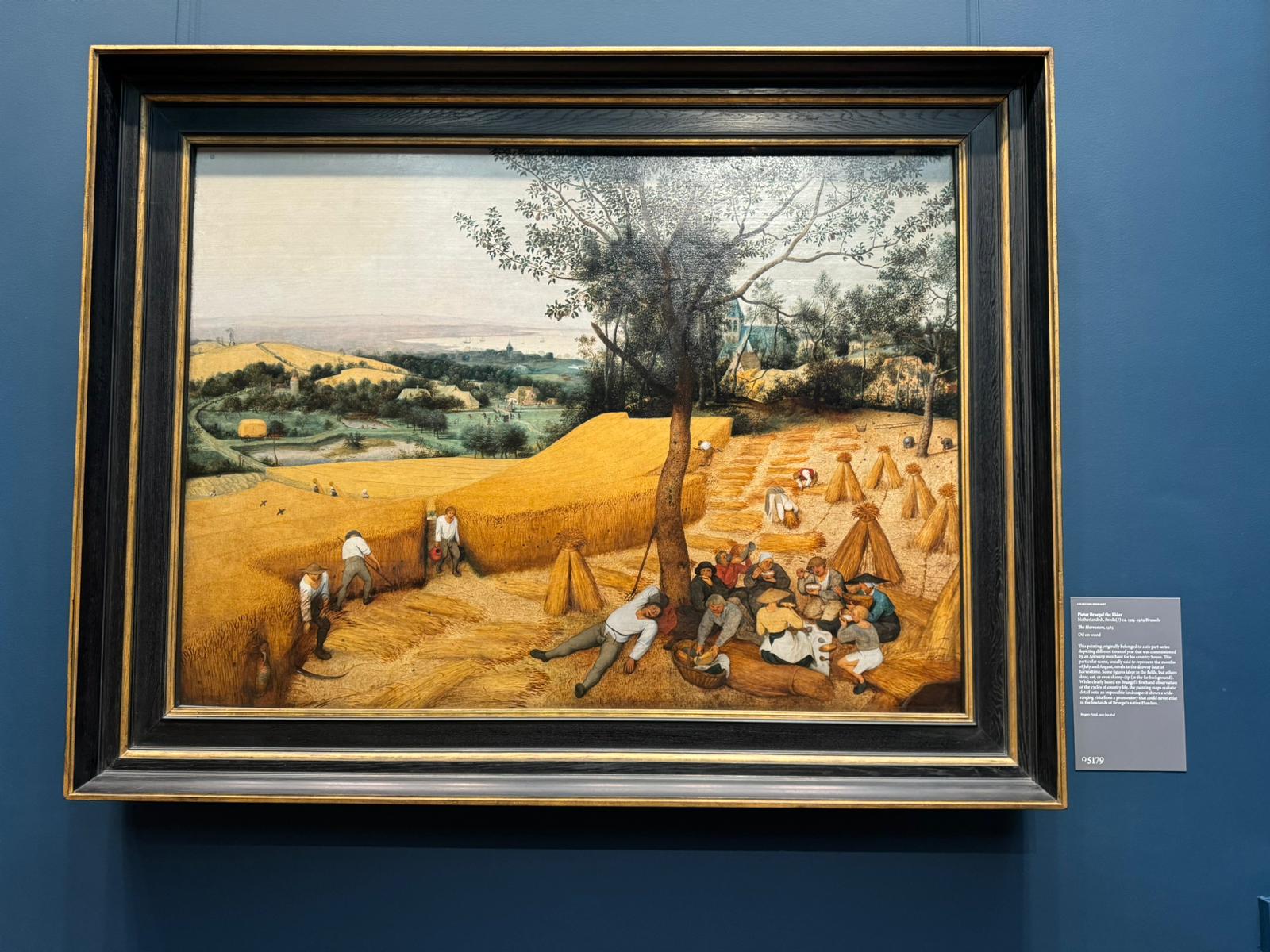The artwork displayed in the image is a masterful painting by Pieter Bruegel the Elder, titled “The Harvesters.” This piece is housed at The Metropolitan Museum of Art, commonly known as the Met. The painting is a striking representation of rural life during the 16th century, characterized by Bruegel’s detailed and immersive portrayal of peasant life.
In the foreground, we see a group of peasants actively engaged in the harvest. Some are bent over, laboriously cutting the ripe golden wheat with their sickles, while others rest under the shade of a large tree. The weary workers taking a break are depicted with a sense of realism and humanity, their postures and expressions suggesting both exhaustion and camaraderie. One can almost feel the warmth of the sun and the dust of the fields.

The middle ground is populated with additional figures who are gathering and bundling the wheat into sheaves. These sheaves are then stacked into conical shapes, creating a rhythmic pattern across the fields. The presence of women and children in the scene indicates the communal effort involved in the harvest, emphasizing the collective nature of rural labor during this period.
In the background, the landscape extends into rolling hills and a serene, pastoral countryside. A small village can be seen in the distance, with a church spire rising above the thatched roofs, providing a sense of place and scale. The distant fields and wooded areas are rendered with Bruegel’s typical attention to detail, giving depth and context to the scene.
The color palette of the painting is dominated by the rich, earthy tones of the wheat and the cool greens of the distant foliage, creating a harmonious balance. The sky above is a pale, almost ethereal blue, suggesting a calm, clear day ideal for harvesting.
Bruegel’s composition is both dynamic and balanced, leading the viewer’s eye through the busy activity of the harvest in the foreground to the tranquil, expansive landscape beyond. This juxtaposition of labor and leisure, of the immediate and the distant, encapsulates the rhythms of rural life and the cycles of nature.
This painting is a fine example of Bruegel’s ability to capture the essence of his time, offering a glimpse into the daily lives of ordinary people with a blend of realism and poetic beauty. It stands as a testament to his skill in creating complex, layered narratives within a single frame, inviting viewers to immerse themselves in the pastoral scenes of the past.
Leave a Reply